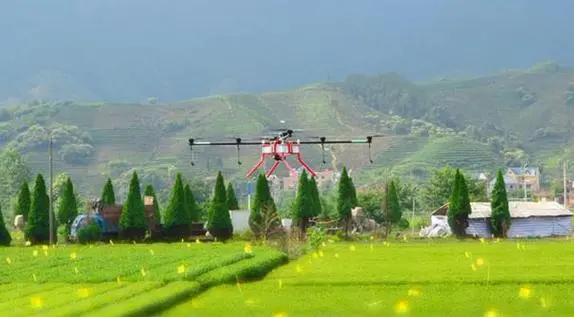On December 13, 2022, at the Ningxi base of South China Agricultural University in Zengcheng, two unmanned rapeseed seeders automatically and sequentially operated from the hangar to the same field to carry out rapeseed sowing operations, which lasted from 4pm that day until night. Luo Xiwen excitedly told the Economic Observer reporter, “Fighting at night with lights burning and unmanned driving to sow rapeseed.
This unmanned rapeseed planting operation was carried out in the “unmanned rice farm” pioneered by Luo Xiwen and his team. Everyone says they are engaged in smart agriculture and unmanned farms, but so far, no one has been able to explain what smart agriculture is and what unmanned farms are, and I cannot explain them clearly. “Luo Xiwen said that in the past three to five years, they have explored some understanding of smart agriculture and unmanned farms and summarized two sentences, Smart agriculture is the development direction of modern agriculture; unmanned farms are an important way to achieve smart agriculture
Luo Xiwen believes that modern agriculture is a long process that will continue until 2030, 2035, and 2050, and modern agriculture is an indicator that will always be pursued. At present, in the field of agricultural machinery navigation, China is basically in a parallel stage with developed countries.
Luo Xiwen explained that firstly, autonomous cars run on regular and flat roads, while autonomous agricultural machinery operates in dry and paddy fields without roads, requiring high navigation control requirements. Second, driverless agricultural machinery should also be equipped with various working tools. To rotary tillage, seed sowing, spray and harvest, it is necessary to match various automatic navigation tractors with the agricultural machinery behind, while cars are mainly driven on the road. Thirdly, autonomous vehicles can be equipped with some more expensive sensors, but agricultural machinery cannot be purchased too expensive. Therefore, software and information methods are required to achieve this goal.
In 2006, the first unmanned rice transplanter developed by Luo Xiwen and his team finally landed in the field. At this time, he was already 61 years old. In 2020, Luo Xiwen and his team established China’s first “unmanned rice farm” in Zengcheng District, Guangzhou. But Luo Xiwen specifically mentioned, “The concept of an unmanned farm is too big. The meaning of rice, vegetables, fruits, and tea is different for each unmanned farm, so I added the qualifier ‘rice’ before it. In fact, rapeseed, corn, and wheat can also be grown.
Luo Xiwen pointed out that unmanned farms have five functions, including full coverage of cultivation, management, and production processes; The transfer operation in the field of the hangar is fully automatic; Automatic obstacle avoidance and abnormal parking to ensure safety; Real time full monitoring of crop production process; Intelligent decision-making and precise operation are all unmanned. This involves the three key technologies of unmanned farms: biotechnology, intelligent agricultural machinery, and information technology. Among them, biotechnology mainly provides quality and cultivation modes suitable for mechanized operations for unmanned farm production; Intelligent agricultural machinery mainly provides intelligent perception, navigation, operation, and management for unmanned farm production; Information technology mainly provides support for information acquisition, transmission, and processing of unmanned farm production, agricultural machinery navigation and automatic operation, and remote operation and maintenance management of agricultural machinery.
Among them, intelligent agricultural machinery should have four functions, including digital perception, intelligent decision-making, precise operation, and intelligent management. Luo Xiwen gave an example in a video titled “Remote Sensing Information Acquisition and Nitrogen Fertilizer Management Technology for Rice Using Micro Unmanned Aerial Vehicles”. A drone flying over a field can obtain the growth status of rice at different positions and then apply multiple fertilizers for different growth differences.
Promoting unmanned farms should have good basic conditions, with large plots, good tractor roads and irrigation and drainage facilities, as well as good satellite and network signals, “said Luo Xiwen. However, China’s agriculture faces the challenges of small-scale farmers, small contiguous plots, and incomplete cultivation of business entities. He gave an example and said, “I went to my hometown Hunan to promote the live streaming machine that won the National Invention Award. I asked them if it was good, and they said yes. I asked them if they would buy it, and they said no because they only have three acres of land at home, buying a machine is useless.







Please sign in to comment
register